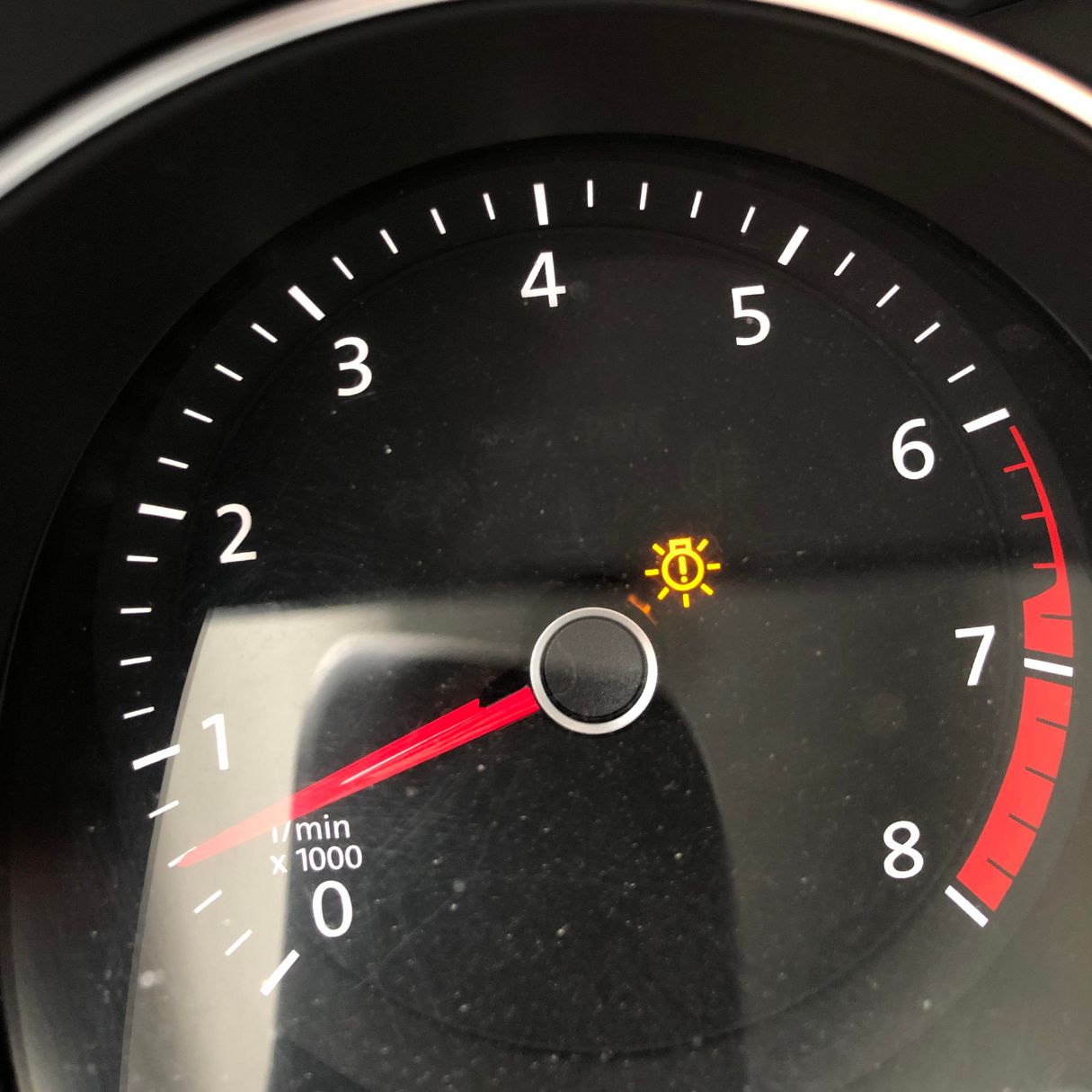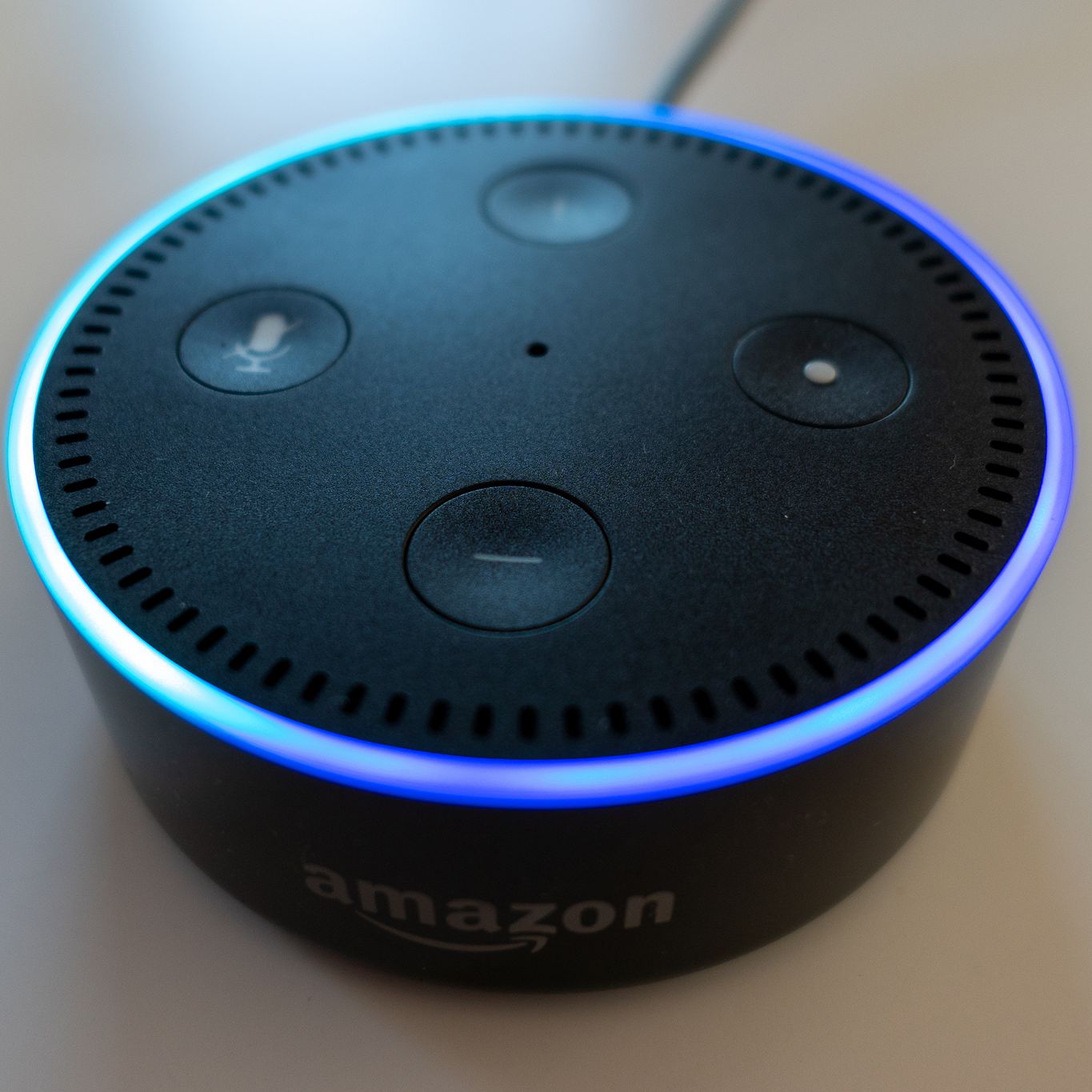Home>Articles>What Does A Light Bulb With An Exclamation Point Mean


Articles
What Does A Light Bulb With An Exclamation Point Mean
Modified: August 28, 2024
Find out what a light bulb with an exclamation point means with our informative articles. Discover the significance and potential issues associated with this symbol.
(Many of the links in this article redirect to a specific reviewed product. Your purchase of these products through affiliate links helps to generate commission for Storables.com, at no extra cost. Learn more)
Introduction
Have you ever glanced at your light bulb and noticed an exclamation point symbol? It can be puzzling to see such a symbol on something as simple as a light bulb. Before you panic and assume the worst, it’s essential to understand the meaning behind this symbol and what it indicates. In this article, we will explore the various light bulb symbols and focus specifically on the exclamation point symbol, deciphering its significance and providing solutions to any potential issues.
Modern light bulbs have come a long way from the traditional incandescent variety. With advancements in technology, we now have access to various types of light bulbs, including LED and smart bulbs. These advancements have brought with them a new set of symbols and indicators to help users understand their functionality and potential problems.
Key Takeaways:
- Don’t panic when you see an exclamation point on your light bulb! It’s a warning sign that something’s amiss, but with the right troubleshooting, you can restore functionality, improve energy efficiency, and ensure safety.
- Understanding light bulb symbols and addressing the exclamation point symbol brings peace of mind, optimized smart features, and enhanced lifespan to your bulbs. Take action to ensure proper lighting and contribute to a sustainable environment.
Read more: What Does A Dimmable Light Bulb Mean?
Understanding Light Bulb Symbols
Before we dive into the specific meaning of the exclamation point symbol on a light bulb, let’s take a moment to understand some common symbols you may encounter.
Light bulbs often feature symbols that provide essential information about their specifications, usage, and potential issues. These symbols are typically located on the base or the packaging of the bulb. Understanding these symbols can help you make informed decisions about which bulbs to purchase and troubleshoot any problems that may arise.
Here are a few common light bulb symbols:
- Wattage: This symbol specifies the power consumption of the bulb. It is represented by the letter “W” followed by a number, such as “60W” or “100W.”
- Lumens: The lumen symbol indicates the brightness or light output of the bulb. It is represented by the letter “lm” followed by a number, such as “800lm” or “1200lm.”
- Energy Efficiency: Light bulbs with energy-efficient ratings may feature symbols like the Energy Star logo or an “ENERGY EFFICIENT” label.
- Dimmable: Some bulbs are designed to work with dimmer switches. The “dimmable” symbol indicates that the bulb can be dimmed to adjust the lighting intensity.
- Temperature: LED bulbs often display a symbol resembling a thermometer to indicate the color temperature. This helps determine the hue of the light emitted, such as warm white or cool white.
- Mercury: For bulbs that contain mercury, a symbol of a crossed-out trash can is often displayed. This serves as a reminder to properly dispose of the bulb to prevent environmental harm.
These symbols provide valuable information about the bulb’s specifications and characteristics. However, one symbol that can cause confusion is the exclamation point symbol. Let’s explore its meaning in the next section.
Meaning of the Exclamation Point Symbol
The exclamation point symbol on a light bulb typically indicates an issue or problem that requires attention. It serves as a warning sign that something is not functioning as it should. In most cases, this symbol is associated with LED or smart bulbs, as they come with advanced features and additional functionalities.
When the exclamation point symbol appears, it signifies that the bulb has detected an error or malfunction. This error can range from a minor issue to a more significant problem. It’s important not to ignore this symbol, as addressing the underlying cause can help ensure the proper functioning and longevity of the bulb.
The specific meaning of the exclamation point symbol may vary depending on the manufacturer and the model of the light bulb. Generally, it indicates one or more of the following issues:
- Connectivity problems: If you have a smart bulb that connects to a network or a smart home system, the exclamation point symbol might indicate a connectivity issue. It could mean that the bulb is not able to establish a stable connection with the network or the hub.
- Compatibility issues: Certain smart bulbs require compatible devices or applications to function properly. If the bulb detects an incompatible setup, it may display the exclamation point symbol to indicate this issue.
- Firmware updates: The exclamation point symbol can also serve as a reminder that the bulb’s firmware needs updating. Firmware updates often provide bug fixes, performance improvements, and compatibility enhancements.
- Electrical problems: In some cases, the exclamation point symbol can be an indication of an electrical issue. This can include problems with the wiring, voltage fluctuations, or inadequate power supply.
It is crucial to assess the specific circumstances and consider the manufacturer’s instructions when interpreting the exclamation point symbol. In the next section, we will explore troubleshooting steps to determine and resolve the issue.
Possible Causes of the Exclamation Point Symbol
When you encounter the exclamation point symbol on a light bulb, it’s essential to understand the possible causes behind it. By identifying the root cause, you can take appropriate steps to resolve the issue and restore the proper functioning of the bulb. Here are some common causes for the appearance of the exclamation point symbol:
- Connectivity issues: If you have a smart bulb, it may be experiencing connectivity problems. This can occur if the bulb is too far away from the Wi-Fi router or smart home hub, or if there are obstacles obstructing the signal. In such cases, the bulb may display the exclamation point symbol to indicate a communication failure.
- Incompatible devices or applications: Certain smart bulbs require compatible devices or applications to work seamlessly. If you are using incompatible devices or outdated applications, it may trigger the exclamation point symbol on the bulb. Make sure to check the manufacturer’s compatibility guidelines to ensure all components are compatible.
- Firmware updates: Manufacturers often release firmware updates for smart bulbs to improve performance, fix bugs, and introduce new features. If you have not updated the firmware of your bulb for a while, it may trigger the exclamation point symbol as a reminder to install the latest update. Check the manufacturer’s website or the accompanying app for firmware update instructions.
- Electrical issues: Problems with the electrical wiring, voltage fluctuations, or inadequate power supply can also trigger the exclamation point symbol on a light bulb. Insufficient power can cause the bulb to malfunction or operate at a lower capacity. Consider checking the electrical connections, voltage stability, and ensuring that the bulb is receiving the correct power supply.
It’s important to note that the specific causes may vary depending on the manufacturer and model of the light bulb. Therefore, it is highly recommended to refer to the manufacturer’s documentation or contact their customer support for specific troubleshooting steps tailored to your bulb’s make and model.
Next, we will discuss some general troubleshooting steps to help resolve the issue and eliminate the exclamation point symbol.
A light bulb with an exclamation point typically indicates a problem with the bulb or the fixture. Check the bulb for any visible damage and ensure it is properly screwed in. If the issue persists, consult a professional for further inspection.
Troubleshooting the Exclamation Point Symbol
When faced with the exclamation point symbol on a light bulb, there are several troubleshooting steps you can take to diagnose and resolve the issue. While the specific steps may vary depending on the bulb manufacturer, here are some general guidelines to help you troubleshoot:
- Check the connectivity: If you’re using a smart bulb, ensure that it is within range of your Wi-Fi router or smart home hub. Try moving the bulb closer to establish a stronger connection. Additionally, check if other smart devices in the same area are experiencing connectivity issues, as this may indicate a network problem.
- Verify compatibility: Make sure that all the devices and applications you’re using with the smart bulb are compatible. Check the manufacturer’s specifications to ensure that your smartphone, smart home hub, or any other devices are supported. If you’re using a third-party app, ensure that it is updated to the latest version.
- Update firmware: Check if there are any available firmware updates for your bulb. Visit the manufacturer’s website or use their dedicated app to see if a new firmware version is available. Follow the provided instructions to update the firmware, which may resolve any known issues and improve functionality.
- Inspect the wiring: If you suspect an electrical issue, carefully inspect the wiring connecting the light bulb. Check for loose connections, frayed wires, or any signs of damage. Ensure that the wiring is securely connected to the socket and that there are no visible issues. If you’re unsure or notice any problems, consult a qualified electrician.
- Power supply: Ensure that the bulb is receiving the appropriate power supply. Verify that the voltage matches the recommended range specified by the manufacturer. If necessary, consider using a voltage stabilizer or surge protector to protect the bulb from fluctuations in electrical supply.
If these troubleshooting steps do not resolve the issue and eliminate the exclamation point symbol, it’s recommended to contact the manufacturer’s customer support or consult a professional for further assistance. They can provide specific guidance tailored to your bulb’s make and model and help you troubleshoot the problem effectively.
By following these troubleshooting steps, you can often identify and resolve the underlying issues causing the exclamation point symbol, allowing your light bulb to function properly again.
Read more: What Does A Red Light Bulb Mean
Steps to Resolve the Issue
Resolving the issue indicated by the exclamation point symbol on a light bulb requires a systematic approach and careful troubleshooting. Here are some steps you can take to address the problem and restore normal operation:
- Check the bulb’s documentation: Refer to the manufacturer’s documentation or user manual that came with the bulb. Look for any specific instructions or troubleshooting steps related to the exclamation point symbol. This will provide valuable insights into the issue and possible solutions.
- Restart or reset the bulb: Sometimes, a simple restart or reset can resolve the issue. Turn off the bulb using the switch or app, leave it off for a few seconds, and then switch it back on. If the problem persists, consult the bulb’s documentation for instructions on how to perform a reset. This can vary depending on the bulb’s make and model.
- Update the bulb’s firmware: Check if there are any available firmware updates for your bulb. Visit the manufacturer’s website or use their dedicated app to check for updates. If a new firmware version is available, follow the provided instructions to update the bulb’s firmware. Firmware updates often address known issues and improve stability.
- Ensure a stable network connection: For smart bulbs, ensure that the bulb is within range of your Wi-Fi router or smart home hub. If the signal is weak or intermittent, consider moving the router or hub closer to the bulb or installing a Wi-Fi extender. This will help establish a stable connection and minimize connectivity issues.
- Check compatibility: Confirm that all the devices and applications being used with the bulb are compatible. Ensure that your smartphone, smart home hub, or any other devices meet the manufacturer’s specifications. Using incompatible devices or outdated applications can lead to compatibility issues and trigger the exclamation point symbol.
- Inspect the wiring: If you suspect an electrical issue, carefully inspect the wiring connecting the light bulb. Check for any loose connections or damaged wires. Ensure that the wiring is securely connected to the socket. If you notice any issues or are unsure, it is best to consult a qualified electrician for further assistance.
- Replace the bulb: If all else fails, and the exclamation point symbol persists even after troubleshooting, it may be necessary to replace the bulb. In some cases, the issue may be related to a manufacturing defect or a component failure that cannot be resolved easily. Consider purchasing a new bulb from a reputable manufacturer to ensure optimal performance.
Remember, the specific steps and solutions may vary depending on the bulb’s make and model. Always refer to the manufacturer’s instructions and consult their customer support if needed. By following these steps, you can effectively resolve the issue indicated by the exclamation point symbol and restore the functionality of your light bulb.
Benefits of Addressing the Exclamation Point Symbol
Addressing the exclamation point symbol on your light bulb comes with several benefits that go beyond simply resolving the issue indicated. Let’s explore the advantages of taking action and addressing the symbol:
- Restored functionality: Resolving the underlying problem identified by the exclamation point symbol allows your light bulb to function properly again. Whether it’s a connectivity issue, a compatibility problem, or a firmware update, addressing these concerns ensures that your bulb performs as intended, providing you with the lighting you need.
- Improved energy efficiency: Certain issues indicated by the exclamation point symbol, such as electrical problems or firmware updates, can impact the energy efficiency of your bulb. By resolving these issues, you can optimize its energy consumption, reducing your electricity bills and contributing to a more sustainable lifestyle.
- Enhanced lifespan: Neglecting the exclamation point symbol can potentially lead to further damage or premature failure of the light bulb. Addressing the issue promptly allows you to extend the lifespan of the bulb, preserving its longevity and avoiding the need for frequent replacements.
- Reduced safety risks: Electrical issues associated with the exclamation point symbol can pose safety risks. Loose connections or inadequate wiring can be a potential fire hazard. By addressing these issues, you ensure a safe and reliable lighting system in your home or workplace.
- Optimized smart features: If you are using a smart bulb, resolving any connectivity or compatibility issues allows you to fully utilize its smart features. This includes controlling the bulb remotely, scheduling lighting routines, integrating it with other smart devices, and enjoying the convenience and flexibility offered by smart lighting technology.
- Peace of mind: Tackling the exclamation point symbol on your light bulb brings peace of mind. Knowing that you have resolved any issues and restored the proper functioning of your bulb eliminates the frustration and uncertainty that can arise from a malfunctioning device. You can enjoy your lighting without worrying about potential issues or errors.
By addressing the exclamation point symbol and taking the necessary steps to resolve the underlying problem, you not only restore functionality but also gain various benefits in terms of energy efficiency, safety, and peace of mind. Remember that each light bulb model may have specific considerations, so always refer to the manufacturer’s guidance and seek professional assistance if needed.
Conclusion
Encountering an exclamation point symbol on your light bulb may initially cause concern, but understanding its meaning and taking appropriate action can help you address the underlying issue. In this article, we explored the significance of light bulb symbols and focused specifically on the exclamation point symbol. We discussed the possible causes of this symbol, including connectivity problems, compatibility issues, firmware updates, and electrical issues.
We provided troubleshooting steps to help you diagnose and resolve the issues associated with the exclamation point symbol. By following these steps, such as checking connectivity, verifying compatibility, updating firmware, inspecting wiring, and ensuring proper power supply, you can effectively troubleshoot and resolve the problem.
Addressing the exclamation point symbol comes with a range of benefits. Resolving the issue restores functionality, improves energy efficiency, extends the lifespan of your bulb, reduces safety risks, optimizes smart features, and provides peace of mind. By taking action, you not only ensure proper lighting but also contribute to a more sustainable and safe environment.
Remember, each bulb manufacturer may have specific guidelines and troubleshooting steps, so always refer to their documentation and seek their assistance if needed. By understanding light bulb symbols, troubleshooting the exclamation point symbol, and taking the necessary steps, you can ensure that your light bulbs provide optimal performance and longevity.
Frequently Asked Questions about What Does A Light Bulb With An Exclamation Point Mean
Was this page helpful?
At Storables.com, we guarantee accurate and reliable information. Our content, validated by Expert Board Contributors, is crafted following stringent Editorial Policies. We're committed to providing you with well-researched, expert-backed insights for all your informational needs.















0 thoughts on “What Does A Light Bulb With An Exclamation Point Mean”